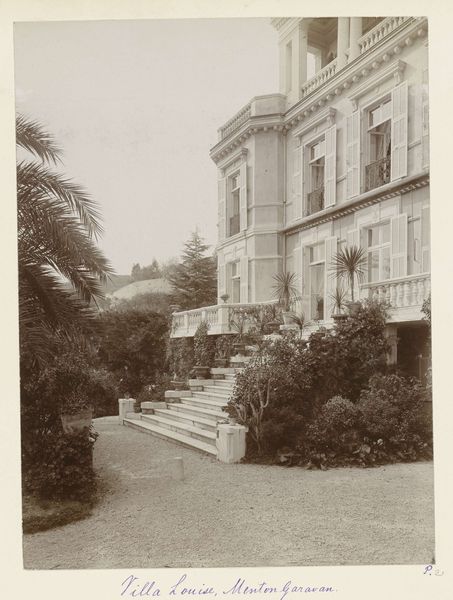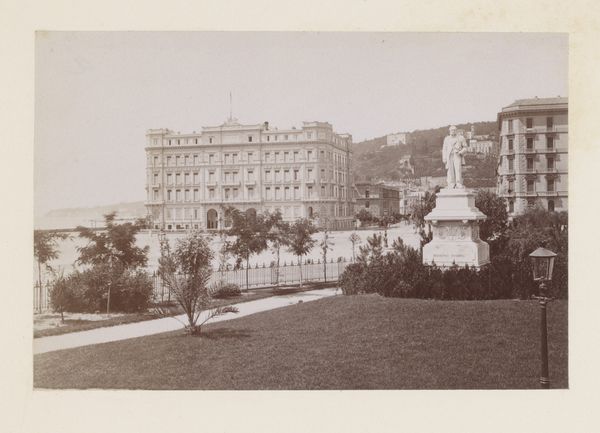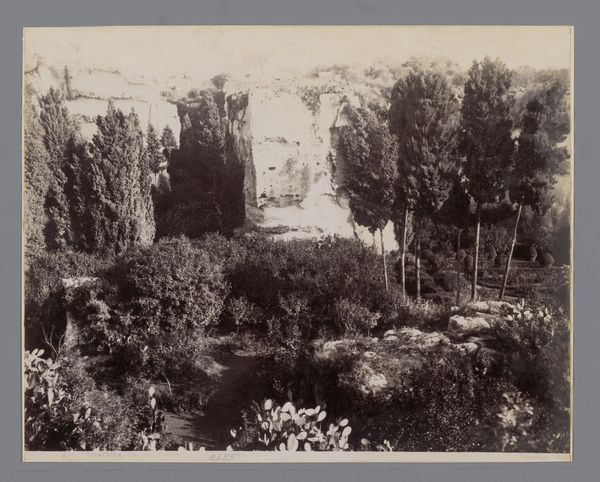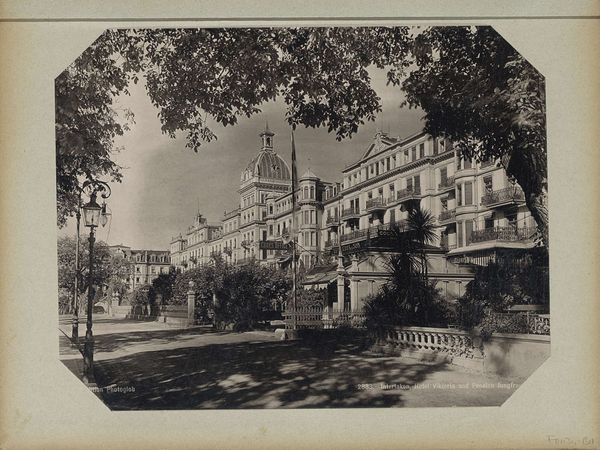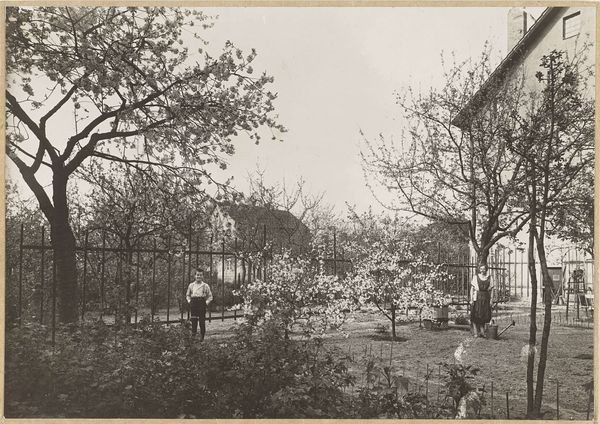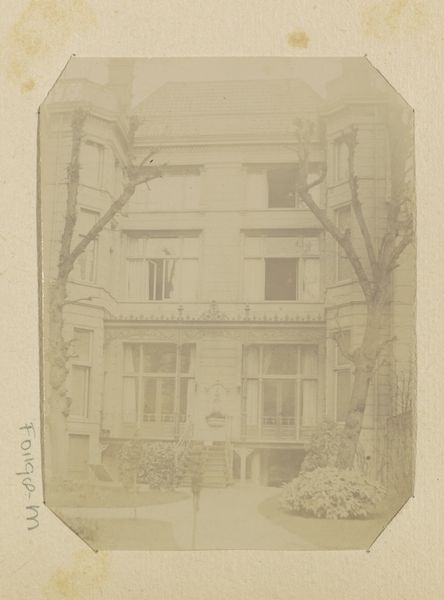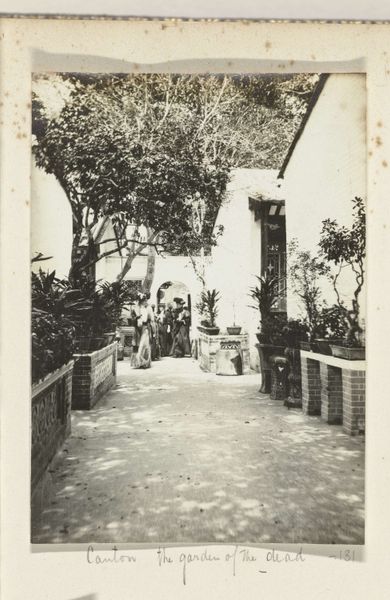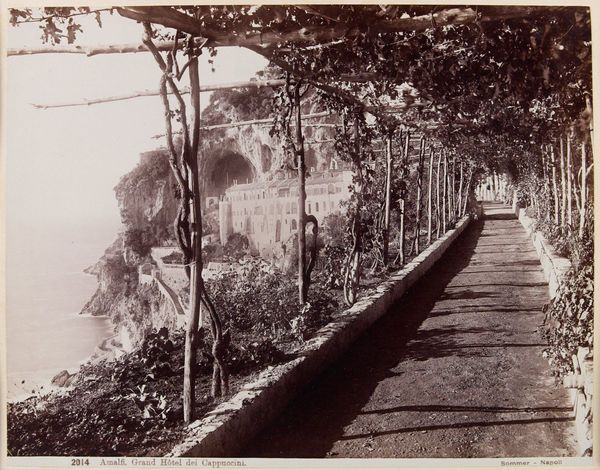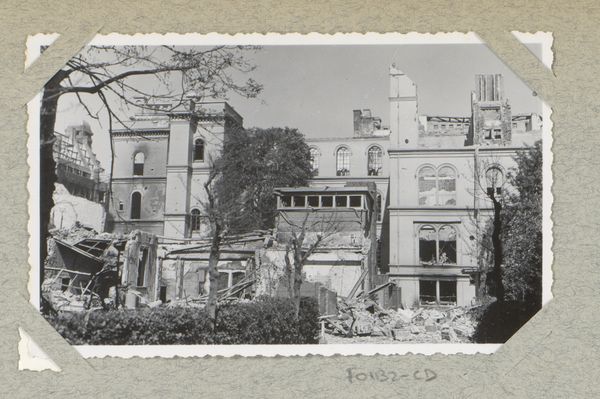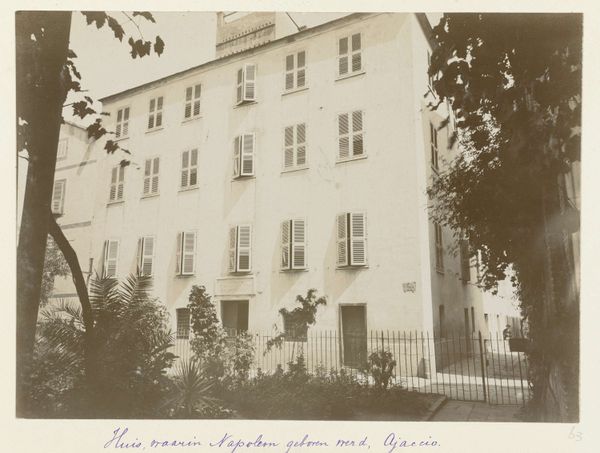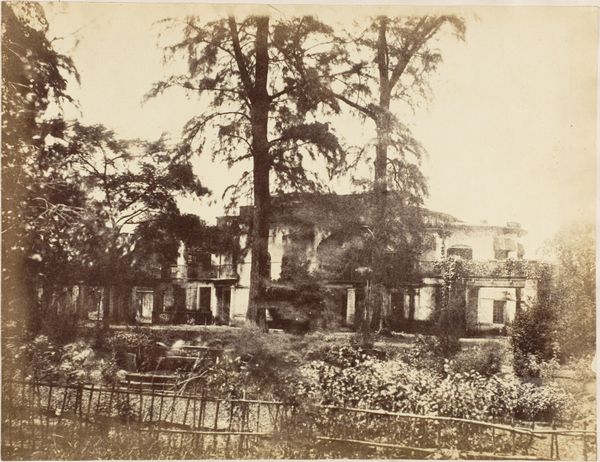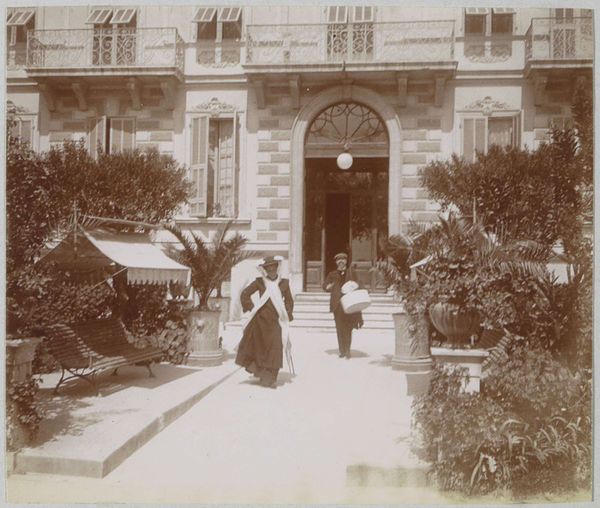
Onderste verdieping en de tuin van het huis Villa Louise in Menton c. 1886 - 1896
0:00
0:00
print, photography
#
print photography
#
still-life-photography
#
pictorialism
# print
#
landscape
#
photography
#
cityscape
Dimensions: height 164 mm, width 222 mm, height 322 mm, width 498 mm
Copyright: Rijks Museum: Open Domain
Editor: So, here we have Henry Pauw van Wieldrecht's photograph, "Onderste verdieping en de tuin van het huis Villa Louise in Menton," circa 1886-1896, a print held by the Rijksmuseum. There’s almost a dreamlike quality to the image. What captures your attention in this composition? Curator: The immediate impression is one of balance, despite the asymmetry of the architectural subject. Consider the tonal arrangement. The brightness of the villa's facade is contrasted by the dark mass of the vegetation. Note, too, how the linear structure of the building itself offers a counterpoint to the organic forms spilling over its balconies. Editor: The interplay between light and shadow is interesting. Does that contrast serve a particular purpose here? Curator: Indeed. The chiaroscuro directs the eye, leading us through the image plane. Observe the textured surfaces of the flora juxtaposed against the smooth planes of the villa's architecture. It isn't just a representational technique. This manipulation of light serves to highlight the interplay between the constructed and the natural. What meaning emerges from that juxtaposition? Editor: I see. The sharp, rigid architecture softened by the untamed garden. It makes you consider their relationship rather than seeing them as separate. Curator: Precisely. Note, furthermore, the surface qualities of the print. The photographic process itself—the textures embedded in the emulsion—contributes to the overall aesthetic. Editor: It’s almost as if the artist is reminding us we're looking at a photograph, not reality itself. Thank you. I noticed how the contrast and structural elements added more layers of complexity to what seems like a nice photo. Curator: Precisely. Deconstructing visual components reveals intention and transforms observation into understanding.
Comments
No comments
Be the first to comment and join the conversation on the ultimate creative platform.
